Breaking down Robbie Ray's two-week stretch of brilliance; more fantasy pitching advice
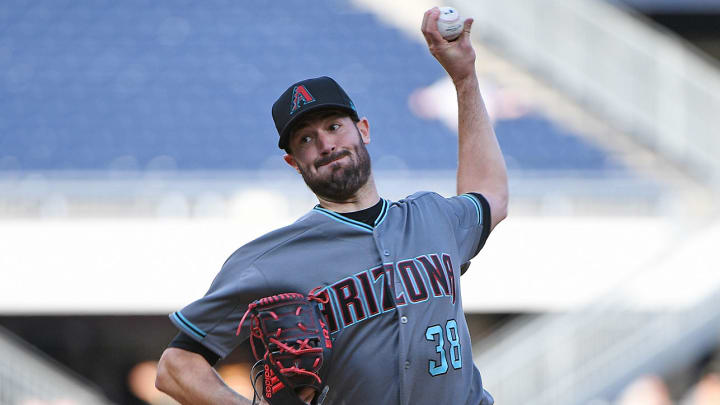
Two weeks ago, Diamondbacks lefthander Robbie Ray hardly seemed like a pitcher who would make a run at owning this season’s longest scoreless-innings streak. He was coming off a start in which he allowed four runs on six hits in four innings to the lowly Pirates. It was the third time in his previous five trips to the mound in which Ray had allowed at least four runs while failing to make it through six innings. At the time, he owned a 4.57 ERA and a 1.43 WHIP and was a model of inconsistency. And then, without warning, something changed.
Over the last two weeks, Ray has made three starts and hasn’t surrendered a run in any of them while looking even more dominant each time out. First, he shut down the Padres on May 20 in San Diego, tossing 7 2/3 shutout innings, allowing two hits and three walks while striking out six batters. Five days later he faced the Brewers, who managed all of two hits off him in seven innings, striking out nine times. On May 30 he faced Pittsburgh again and delivered the best outing of his career, throwing his first complete game and shut out while striking out 10 in a 3-0 win at PNC Park.
Add it all up, and Ray has a 0.00 ERA, 0.46 WHIP and 25 strikeouts against three walks in his last three starts, a stretch covering 23 2/3 innings. Starting with the clean inning he thew to wrap up that bad outing against the Pirates two weeks ago, Rays has pitched 24 2/3 consecutive scoreless innings, the second-longest streak for a starting pitcher this season behind only the 26 2/3 tossed by Houston's Lance McCullers from May 1 through May 23.
Overall Ray now sports a 3.00 ERA, 3.27 FIP and 1.10 WHIP with 84 strikeouts in 69 innings. He’s one of five starters this season with a strikeout rate of at least 30% and since the start of last year he ranks fifth in the majors with a 28.7% strikeout rate. The pitchers ahead of him are the Nationals' Max Scherzer and Stephen Strasburg, the Dodgers' Clayton Kershaw and the Mets' Noah Syndergaard.
None of this answers the following question, though: What has gotten into Ray over his last three starts? The good news is we can put together a satisfying answer. It all starts with his pitch usage stats, which we can find quite easily thanks to Statcast. The first pie chart represents all of Ray’s starts through his last bad one two weeks ago against the Pirates. The second pie chart includes just his last three outings.
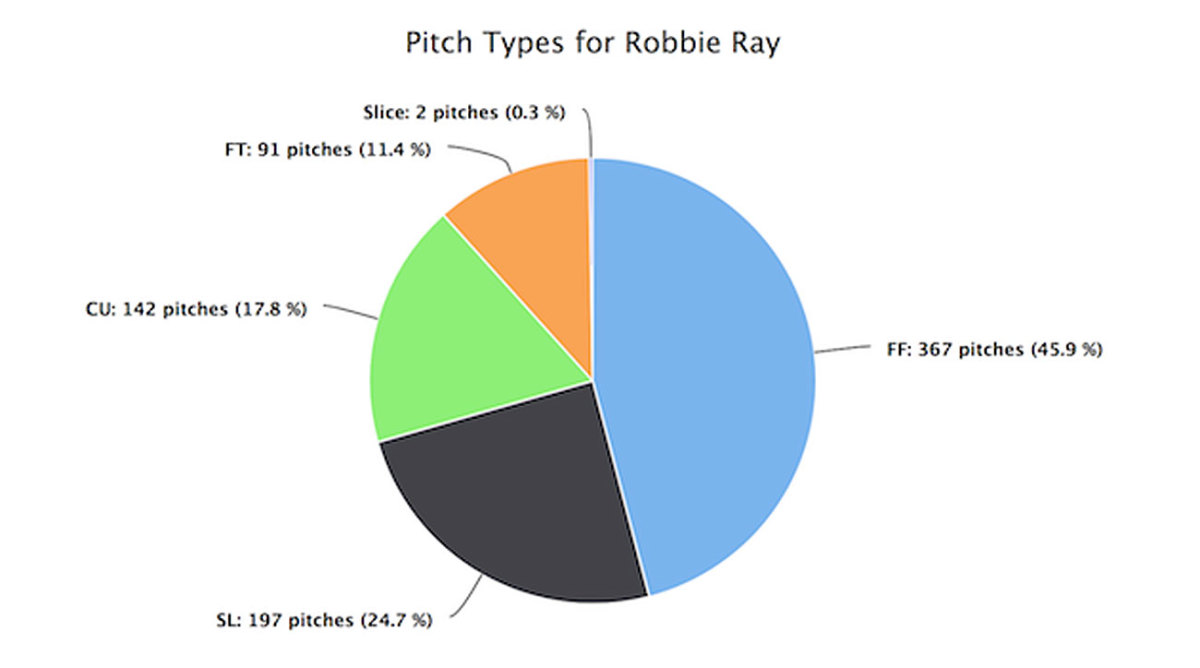
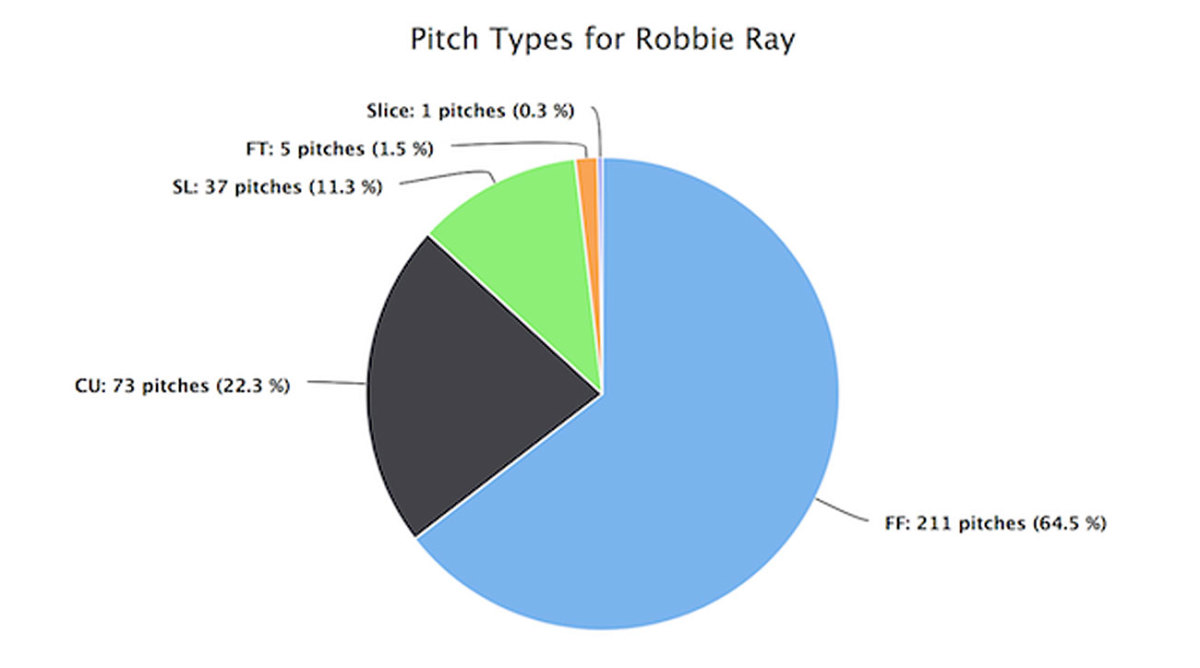
Ray has thrown his four-seam fastball a whole lot more often, with its usage rate jumping nearly 20 percentage points. He has also flipped the usage rates for his curveball and slider, with the former taking a leading role during his run of dominance.
The slider isn’t a bad pitch for him at all. In fact, it has been his best swing-and-miss offering this season, enjoying a 24.8% whiff rate. Even over his last three starts, with the curveball taking precedence, the slider has been effective when Ray turns to it. Hitters are 1-for-8 against it when putting it in play, with five whiffs on 37 total pitches. But because it has taken a backseat on the field it will do the same in this column. Instead, we’re going to focus on Ray’s four-seamer and his curveball, the two pitches that have done the heavy lifting for him recently.
Ray’s four-seamer is a plus fastball, at least in terms of velocity, sitting in the mid-90s on average. Still, he wasn’t getting much out of it before the last three starts. The pitch had a whiff rate of 7.9%, and hitters went 18-for-49 when putting it in play, with four homers and two doubles. Those numbers aren’t out of the ordinary for a fastball, even one with as much giddy-up as Ray’s. No matter how hard a pitch is, a major leaguer can hit a straight fastball. That doesn’t change the fact that, outside of establishing a foundation for his secondary pitches, the four-seamer wasn’t doing much for Ray.
Compare that with his last three starts. Ray has thrown the four-seamer 211 times, getting 32 whiffs, good for 15.2%. Hitters are 5-for-33 against it when putting it in play, with just one extra-base hit, a double by Pittsburgh's Josh Harrison.
What has been different the last three starts? Well, we know that fastball command is priority No. 1 for every pitcher. Without that, a pitcher has nothing. Ray’s four-seam heat map shows us that his command of the pitch has taken a dramatic turn in his favor in his last three outings. These maps are from the catcher’s perspective.
First eight starts:
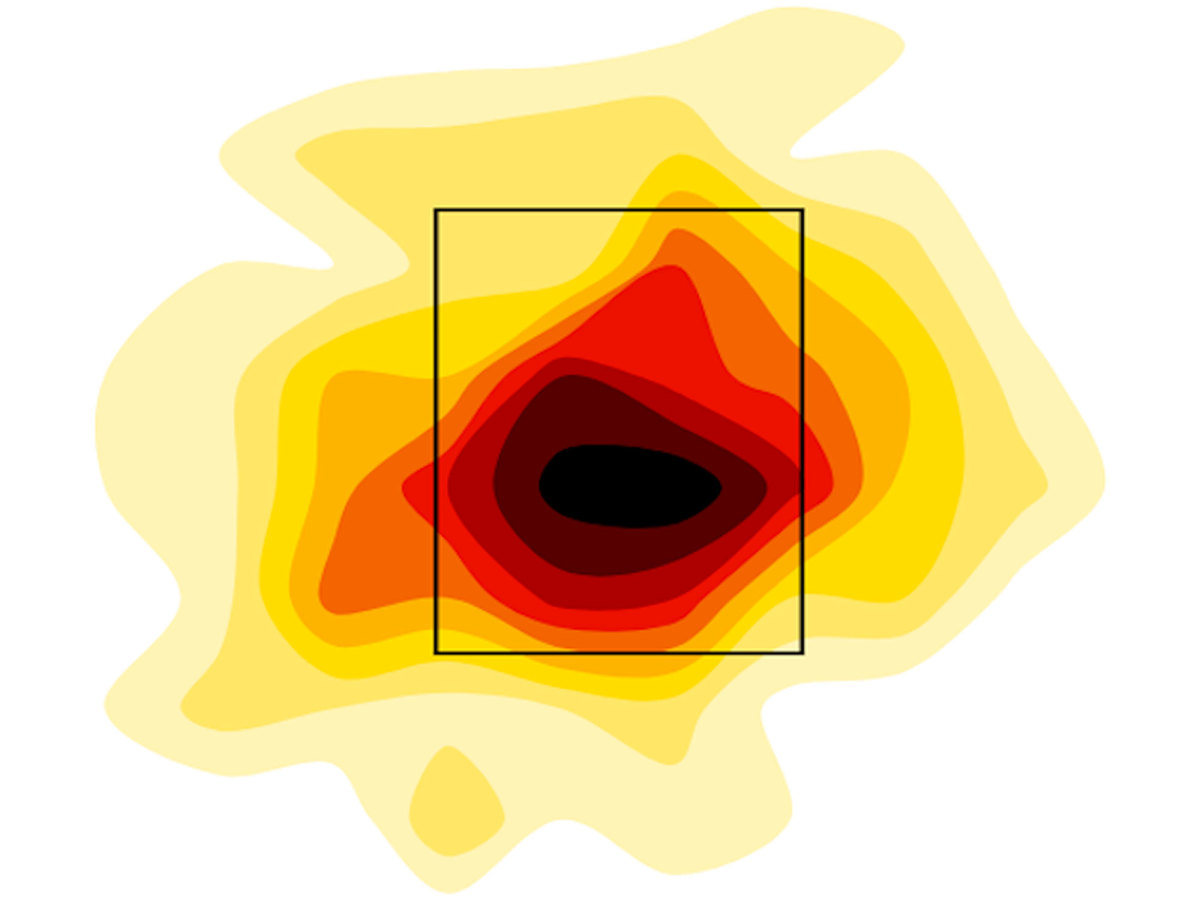
Last three starts:
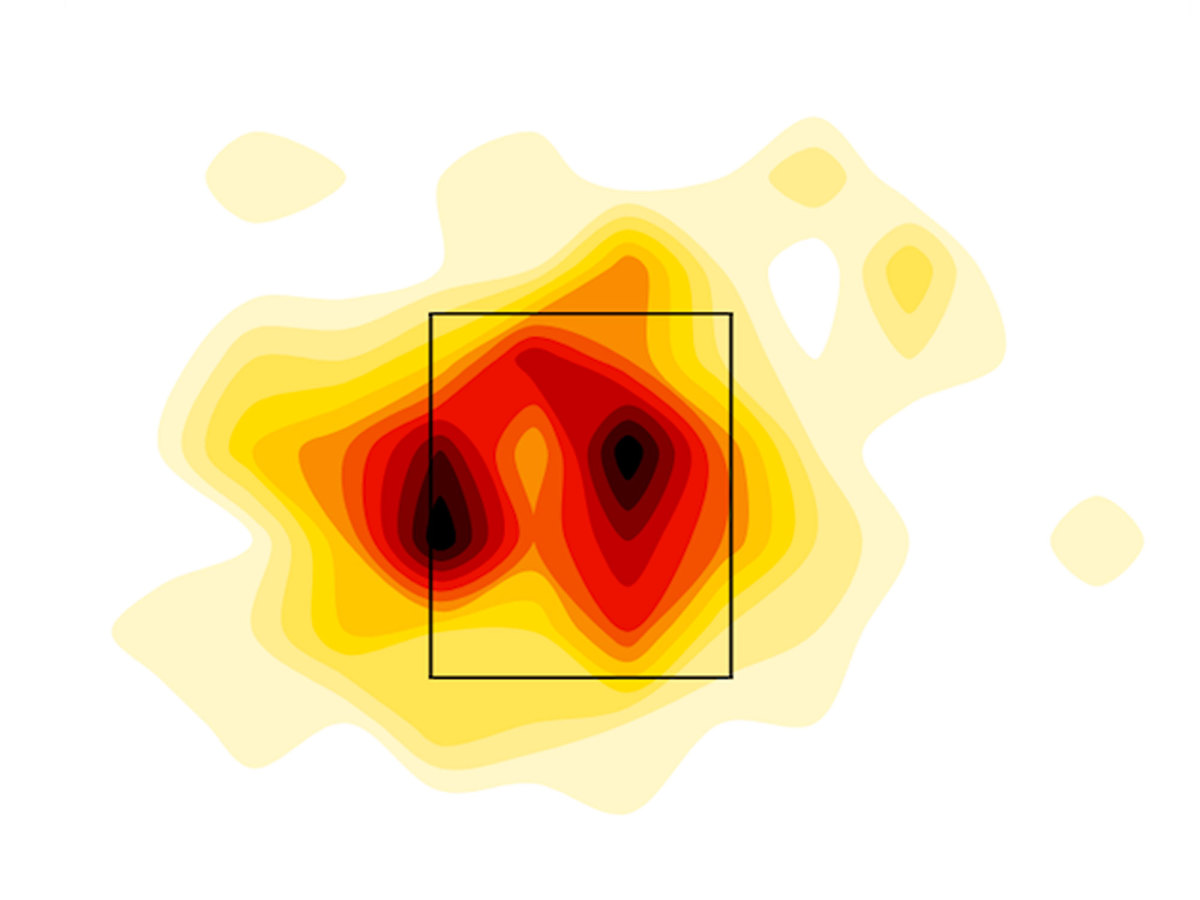
Ray has been much better recently at getting his fastball in on the hands of righties, making it much more difficult for them to get around on a 94-95 mph pitch. The cluster of four-seamers in the northeast part of the heat map displays an emphasis on elevating the fastball, whichhas two effects: First, the higher a fastball is, the harder it is to catch up to it. Second, changing a hitter’s eye level makes him more susceptible to breaking balls down in the zone. And that’s where the curveball comes in.
Ray has thrown 73 curveballs in his last three starts. Hitters have whiffed 10 times, taken 20 strikes, and fouled off the pitch five times. They’re 2-for-11 when putting it in play, and both hits were singles. Not one of the 27 balls he has thrown with the curve have resulted in a walk, and he has thrown the pitch three times in three-ball counts. In other words, Ray has not been hurt too badly by any of his 73 curveballs over his last three outings.
Of course, it’s hard for to produce anything but a pitcher-friendly outcome against a pitch that looks like this.
What makes Ray’s curveball such a weapon is that it isn’t just a chase pitch. Remember, he has produced twice as many called strikes as swings-and-misses with it in his last three starts. Not only can Ray throw a get-me-over-curveball to start an at-bat and get ahead, he can also turn to it in even counts or when he’s behind, and trust that he can get a called strike out of the pitch. The effectiveness of his curve allows Ray to pitch backwards, making him unpredictable. Once that seed is planted in a hitter’s head, the pitcher is in the driver’s seat, almost regardless of count.
For a good example of this, let’s turn to an at-bat by Milwaukee's Eric Thames on May 25. In a 1-1 count, Ray feathers in a curveball that Thames takes for strike two.
Imagine if Ray’s curve were nothing more than a chase pitch. Given Thames’s handle on the strike zone, we can safely assume he would take that offering. From that point forward, the at-bat would have unfolded completely differently. At 1-2, though, Ray is in command. He goes back to the curve, and this time buries it in the dirt. A defensive Thames flails at it for strike three.
Those two pitches illustrate why Ray’s curveball is one of his strongest assets. Sharp movement is great, but if a pitcher cannot throw his breaking ball in the zone, it becomes easy for hitters to lay off, even when they’re behind in the count. By proving that he can throw his curveball in the zone with regularity, Ray forces hitters to be prepared to hit the pitch. Putting that in their minds makes catching up to his fastball and identifying his slider that much harder.
For a good example of that, we turn to the final batter of Ray’s shutout of the Pirates. It’s a five-pitch strikeout of Josh Bell to put the capper on the best start of Ray’s four-year career. It’s also sequencing-as-artwork, especially considering Ray was already at a career-high in pitches thrown when the at-bat started. It starts, as you might imagine, with a curveball.
0-0, curveball
0-1, four-seam fastball
0-2, curveball
1-2, curveball
At this point, Ray has Bell right where he wants him. The 0-2 curveball in the dirt, backed up by a 1-2 curveball in the zone that Bell barely managed to foul off, has the hitter on his heels. The 1-2 offering, another example of Ray pitching backwards, has to be in Bell’s head. Ray then reaches back for one more great fastball, putting a bow on the night.
There wasn’t any question about Ray’s ability to miss bats heading into this season. Over his last three starts, he has proved that he can make adjustments and be a pitcher, not just a thrower.
Pitchers To Watch This Week
Junior Guerra, RHP, Brewers
Guerra has thrown the ball well since coming off the DL, allowing one run on seven hits and six walks, striking out nine in 11 2/3 innings. The degree of difficulty has been high, as well, with his two starts coming against the Diamondbacks and the Mets. Guerra was one of the bright surprises in Milwaukee last year, totaling a 2.81 ERA, 3.70 FIP and 1.13 WHIP with 100 strikeouts in 121 2/3 innings. He’s worthy of a look in all fantasy formats, no matter how he pitches this week. Guerra is slated for a pair of starts, taking on the Giants on Monday and the Diamondback on Saturday.
J.A. Happ, LHP, Blue Jays
Happ returned last week from a six-week stay on the DL, allowing two runs—both on solo homers—in four innings against the Reds. Happ walked three batters in the outing, and while none ended up crossing the plate, the extra work conspired to knock him out of the game early. Still, Happ was quite good before hitting the DL, and we can cut him some slack for his outing last week. Remember, he had 20 strikeouts and zero walks in 16 innings before going on the shelf. He’s scheduled for two starts this week, facing the A’s on Monday and the Mariners on Sunday.
Dinelson Lamet, RHP, Padres
Lamet has made two starts for the Padres, allowing three runs on eight hits in 10 innings, striking out 16 while walking three. Watch Lamet, and you’ll instantly see what makes him so intriguing. The 24-year-old sits in the mid-90s with his four-seam fastball and features a power slider that has produced 15 swings-and-misses on 62 pitches. There’s a whole lot of potential here. Lamet will take the ball twice this week, drawing the Diamondbacks on Tuesday and the Royals on Sunday.
Aaron Nola, RHP, Phillies
Nola has been knocked around in his last two starts at the hands of the Reds and the Marlins. All told, he surrendered nine runs on 11 hits, including three homers, in nine innings in the two outings, falling to 2-3 on the season. There’s no doubting the electricity of Nola’s stuff, but he has been unable to harness it this season, beset all too often by injury. A year ago at this time, Nola was putting a bow on an eight-start stretch during which he posted a 1.73 ERA, 0.98 WHIP and 55 strikeouts in 52 innings. That’s who he can be when he’s at his best. Nola will take the mound on Tuesday in Atlanta and on Sunday in St. Louis.
Jake Arrieta, RHP, Cubs
Arrieta may have turned a corner, allowing one or zero runs while pitching six innings and striking out at least six batters in two of his last three starts. He surrendered four runs in six innings to the Dodgers in the outlier but was done in by a pair of homers and still fanned nine batters while walking just one in that outing. Arrieta was the victim of some bad luck early in the season but it seems to be normalizing, and that is showing up in his results. He will face the Marlins on Tuesday and the Rockies on Sunday.
The 30: Astros stay on top while an unlikely slugger is powering the Yankees
Prospect Watch
Sean Newcomb, LHP, Braves
Newcomb, the 15th pick in the 2014 draft, is getting his first taste of the Triple A level this season. If his first 11 starts of the year are any indication, he won’t be there long. Newcomb, in fact, could be the next big prospect pitcher called up to the majors.
Newcomb, who will turn 24 years old next week, has pitched to a 2.97 ERA, a 3.21 FIP and a 1.35 WHIP in 57 2/3 innings, with 74 strikeouts against 33 walks. His 29.7% strikeout rate certainly suggests he’ll be able to miss bats when he reaches The Show. Control remains an issue, and he won’t be able to get away with a 13.3% walk rate at the next level. Still, if he can miss bats like this once he arrives in Atlanta, he’ll prove himself a huge part of the team’s future.
Newcomb’s fastball sits in the mid-90s, though he can run it up to near 100 mph. His curveball is his best out pitch, generating a ton of whiffs and giving him a real weapon when he’s ahead in the count. With the Braves unlikely to be in the playoff picture at any point this season, they should want to get a good, long look at a pitcher who should be a key rotation piece next season. Once Newcomb gets the call, he’ll be immediately relevant in all fantasy leagues.
Steroids, Ken Caminiti and the inside story of the SI article that changed baseball forever
Two-start Pitchers
1. Max Scherzer, RHP, Nationals
2. Jake Arrieta, RHP, Cubs
3. Chris Archer, RHP, Rays
4. James Paxton, LHP, Mariners
5. Robbie Ray, LHP, Diamondbacks
6. Carlos Martinez, RHP, Cardinals
7. Jose Quintana, LHP, White Sox
8. Adam Wainwright, RHP, Cardinals
9. J.A. Happ, LHP, Blue Jays
10. Dan Straily, RHP, Marlins
11. Masahiro Tanaka, RHP, Yankees
12. Jeff Samardzija, RHP, Giants
13. Ivan Nova, RHP, Pirates
14. Junior Guerra, RHP, Brewers
15. Daniel Norris, LHP, Tigers
16. Ian Kennedy, RHP, Royals
17. Kevin Gausman, RHP, Orioles
18. Gio Gonzalez, LHP, Nationals
19. Aaron Nola, RHP, Phillies
20. Sean Manaea, LHP, A's
21. Drew Pomeranz, LHP, Red Sox
22. Antonio Senzatela, RHP, Rockies
23. Jaime Garcia, LHP, Braves
24. Dinelson Lamet, RHP, Padres
25. Jesse Chavez, RHP, Angels
26. Chase Anderson, RHP, Brewers
27. Bartolo Colon, RHP, Braves
28. Mike Fiers, RHP, RHP, Astros
29. Hector Santiago, LHP, Twins
30. Eddie Butler, RHP, Cubs
31. Jesse Hahn, RHP, A's
32. Tim Adleman, RHP, Reds
33. Nick Pivetta, RHP, Phillies
34. Matt Cain, RHP, Giants
35. Asher Wojciechowski, RHP, Reds
GIF of the Week
Indians ace Corey Kluber returned from the DL last Thursday, striking out 10 A’s across six shutout innings in an 8-0 Cleveland win. Mark Canha, who struck out in each of his three at-bats against the 2014 AL Cy Young Award winner and was 0-for-4 with 4 Ks on the night, likely wishes Kluber had stayed on the DL at least one more day.
